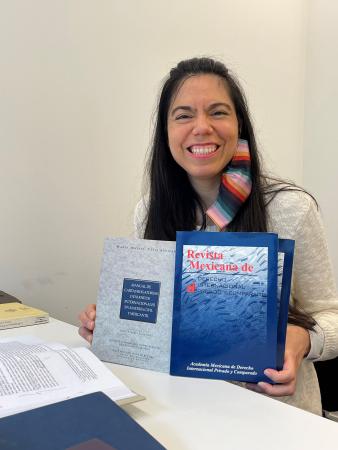Manual de Cartas Rogatorias o Exhortos Internacionales en Materia Civil y Mercantil, Guadalajara, Consejo General del Poder Judicial del Estado de Jalisco, Universidad Panamericana, 2003.
(Handbook on International Letters Rogatory in Civil and Commercial Matters)
Book donation by María Mayela Celis Aguilar
Letters rogatory (also known as letters of request and in Spanish as “exhortos o cartas rogatorias”) are an essential tool in international litigation. There are multiple treaties applicable to letters rogatory both at the international and at the regional level. This book seeks to provide practical guidance as to the instruments applicable to Mexico but may also be used in ascertaining the applicable instruments in the Americas as a whole.
This book drew its inspiration from the seminal book of Professor Jorge Alberto Silva Silva entitled Derecho internacional sobre el proceso: procesos civil y comercial (1997), which was the first book published in Mexico that studied international civil procedure as a separate subject of private international law. The prologue of this Handbook has been drawn up by Professor Silva Silva.
This book is divided into two chapters. The first chapter provides an introduction to the basic elements of international litigation. The second chapter deals with letters rogatory and classifies international instruments into two main areas: instruments which deal directly with letters rogatory as such and instruments which deal indirectly with letters rogatory. With regard to the former, the book focuses on the Inter-American Convention on Letters Rogatory (1975) and its Protocol (1979), as well as Mexican legislation; with respect to the latter, the book analyses the HCCH Conventions on Service (1965) and Evidence (1970), the Inter-American Convention on the Taking of Evidence Abroad (1975) and its Protocol (1984), the Inter-American Convention on Extraterritorial Validity of Foreign Judgments and Arbitral Awards (1979) and the bilateral convention on the recognition of judgments and arbitral awards in civil and commercial matters between Spain and Mexico (1989).
The book also contains many useful annexes on diverse topics such as jurisdiction under Mexican and US law, Apostilles and legalizations, forms (under and outside the treaties discussed) and contact details of Central Authorities.
Litigants, judges and students may benefit from reading this book as it has a very practical focus and explains in an easy manner many international and regional instruments. While this book was published in 2003, it is still relevant in many respects. In particular, the Inter-American system remains for its most part unchanged. The section on the HCCH instruments may need to be supplemented with more recent sources, such as the Practical Handbooks published by the Hague Conference on Private International Law (HCCH).
